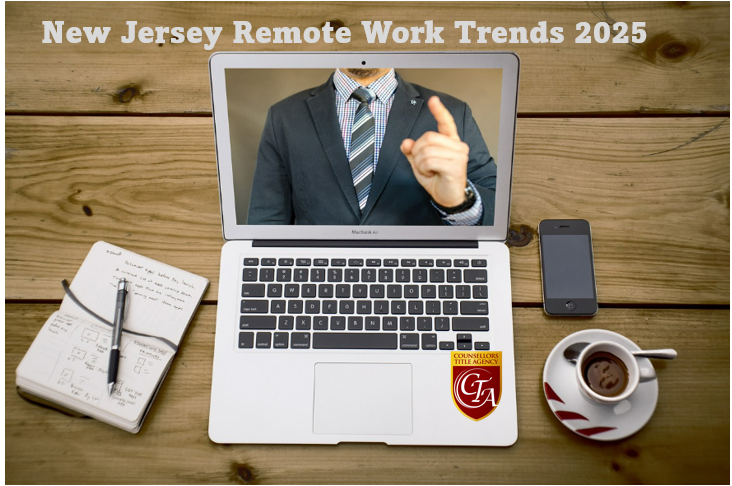
The landscape of American work continues to evolve, and for New Jersey professionals, understanding these trends is crucial for career planning and real estate decisions. While remote work may not dominate the workforce as it did during the 2020 pandemic peak, it remains a significant force shaping how and where Americans work.
The Current State of Remote Work
Recent data from the Current Population Survey reveals that approximately 34.3 million employed Americans worked from home in April 2025, representing 21.6% of the workforce. This telework rate has remained remarkably stable, consistently ranging between 17.9% and 23.8% since October 2022. Of those working remotely, more than half work entirely from home, while others maintain hybrid schedules.
For New Jersey residents, these national trends have particular relevance given the state’s proximity to major metropolitan areas and its concentration of knowledge-based industries.
Who’s Working from Home? Key Demographics
Women Leading the Remote Work Revolution
The data shows a clear gender divide in remote work adoption. Nearly 25% of employed women work from home compared to about 19% of employed men. This trend reflects the concentration of women in professional, administrative, and office-based roles that adapted well to remote work during the pandemic. For New Jersey’s diverse workforce, this pattern is particularly pronounced given the state’s strong representation in sectors like pharmaceuticals, finance, and technology.
The flexibility of remote work continues to appeal to women balancing career advancement with caregiving responsibilities, a consideration that influences both employment choices and housing decisions in New Jersey’s competitive market.
Age and Career Stage Matter
Remote work participation varies significantly by age group. Workers aged 16-24 show the lowest telework rates at just 6.2%, while those aged 25-54 report about 24% working remotely, and workers 55 and older maintain around 23% remote work participation.
This age-based pattern reflects career progression into roles that support remote work. Younger workers often start in entry-level positions in retail, hospitality, and service sectors requiring physical presence, while more experienced professionals have advanced into managerial or specialized roles where remote work is not just feasible but expected.
Education: The Great Divider
Educational attainment remains the strongest predictor of remote work opportunities. The statistics paint a clear picture of how education opens doors to flexible work arrangements:
- Workers without high school diplomas: 3.1% work remotely
- High school graduates without college: 8.4% telework
- Some college or associate degree holders: 17.3% work from home
- Bachelor’s degree or higher: 38.3% work remotely
This educational divide has significant implications for New Jersey’s workforce development and housing market patterns. Areas with higher concentrations of college-educated professionals are more likely to see sustained demand for homes with dedicated office space and reliable internet infrastructure.
Industry and Occupation Patterns
Professional and technical fields continue to lead in remote work adoption, particularly roles in computer and mathematical occupations, business and financial operations. These knowledge-based sectors rely heavily on digital communication tools and project-based work that translates well to remote settings.
Conversely, occupations requiring physical presence such as food service, transportation, manufacturing, and construction naturally offer limited remote opportunities. This creates a two-tier employment market with different implications for housing needs and location preferences.
Implications for New Jersey Professionals
These remote work trends have several important implications for New Jersey’s workforce and real estate market. The sustained popularity of remote work means that professionals with college degrees and experience in knowledge-based industries have unprecedented flexibility in where they choose to live and work.
For those considering career transitions or real estate decisions, understanding these trends can inform strategic choices about skill development, industry focus, and geographic location. The data suggests that investing in education and developing expertise in digitally-enabled fields continues to provide the greatest access to flexible work arrangements.
The stability of remote work rates over the past two years indicates that this isn’t a temporary pandemic-era phenomenon but rather a permanent shift in how many Americans approach work. For New Jersey professionals, this represents both opportunity and challenge as the state continues to compete for talent in an increasingly flexible labor market.
As we move forward, these trends will likely continue to influence everything from commercial real estate demand to residential housing patterns, making it essential for professionals to stay informed about the evolving nature of work in America.
